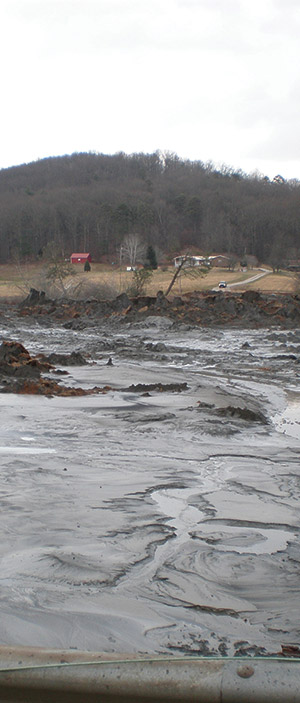
Loophole in law allows toxic coal ash to go largely unregulated
Each year, about one billion tons of coal is burned in the United States, making it the largest source of fuel used to produce electricity. Along with this production come a number of waste streams. These include gaseous exhaust, wastewater, and about 130 million tons of leftover solid waste known as “coal ash.”
The “coal ash” waste that is left over from burning coal takes four general forms: fly ash, bottom ash, boiler slag, and flue gas desulfurization (“FGD”) gypsum, which each come from a slightly different place in a coal burning furnace. Fly ash is comprised of all the fine ash particles that are small and light enough to rise with the exhaust gases, while bottom ash is the collection materials that collect either at the bottom or on the sides of the coal furnace. Boiler slag is a specific type of bottom ash created in “wet-bottom” boilers, when molten bottom ash is removed and quenched with water, forming a crystalline material. FGD gypsum is another special case, that results from a type of control used to remove sulfur dioxide from the exhaust gases (the sulfur dioxide in the exhaust is reacted with limestone, oxygen, and water to form solid gypsum).
Unfortunately, all that coal ash is not benign. Since it is made up of only the materials that do not burn when coal is combusted, they can end up with highly concentrated levels of toxic contaminants than were present only in trace small amounts the source coal. And when the coal ash isn’t properly managed, those toxic elements can then leach out and threaten the health of people and the environment just like when they are directly emitted into the air or water. However, coal ash is not as strictly regulated as those other waste streams.
The most dramatic cases of damage from coal ash occur when enormous lagoons of toxic ash burst like when a dam failed and spilled over one billion gallons of coal ash into the Emory River in Tennessee in 2008. However, pollution from coal ash also takes a less dramatic, but no less harmful form, when toxic chemicals leak slowly from dumps or “beneficial uses” in the environment. Documented contamination of water has occurred at more than 200 disposal sites in 37 states. Of those types of damages, the EPA has found more places in Wisconsin than any other state where coal ash has impacted groundwater.
So why are the toxic materials in coal ash less controlled than other waste streams? There is a loophole specific to “fossil fuel combustion wastes” in the primary law dealing with all solid waste in the United States – the Resource Conservation and Recovery Act (RCRA). RCRA distinguishes between wastes that are considered “hazardous” and those that are not, and places the strictest requirements on managing hazardous wastes — including those that that threaten human health or the environment when improperly managed. The loophole in RCRA excludes coal ash from being considered hazardous, and therefore allows it to be managed as if it were a completely benign material.
